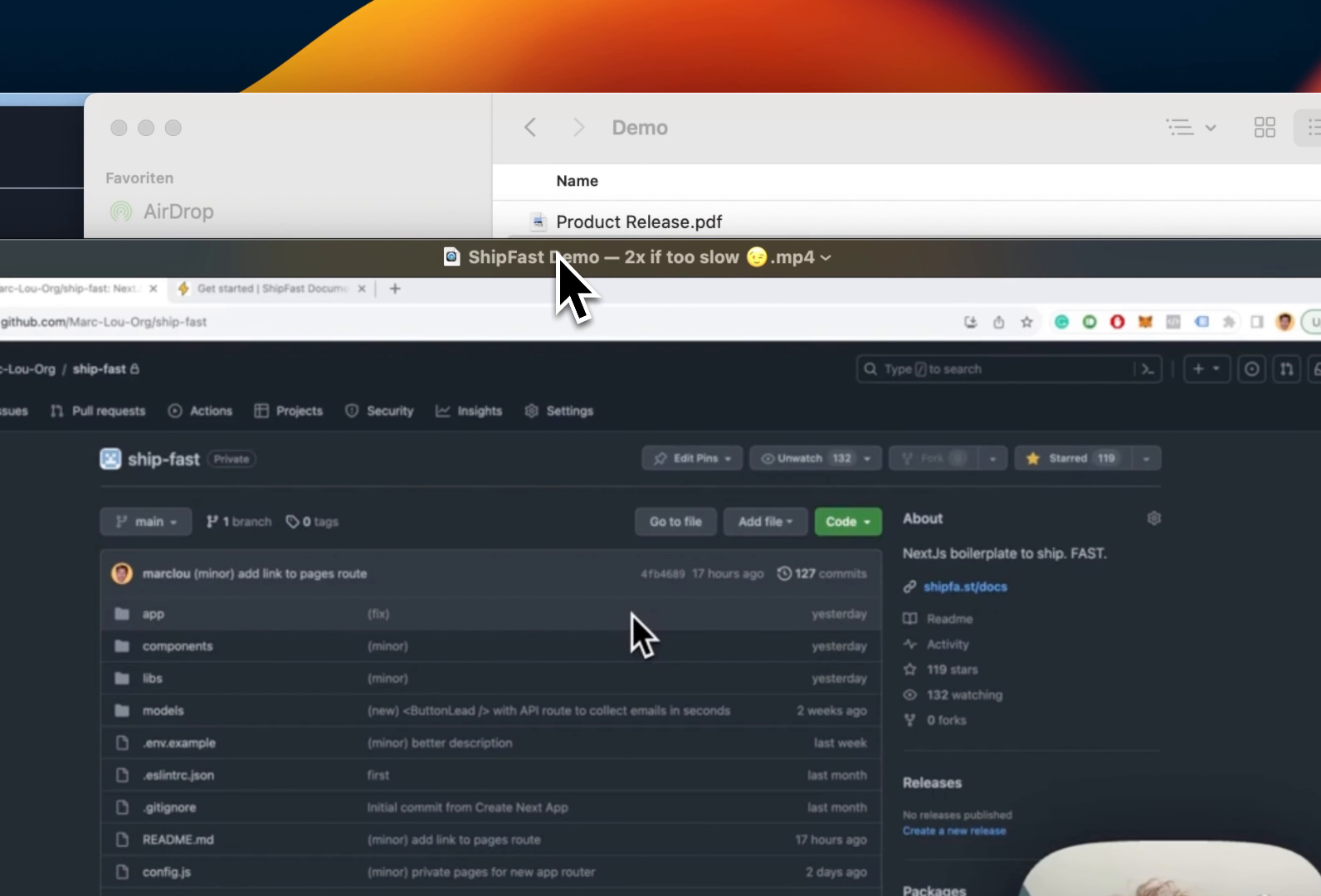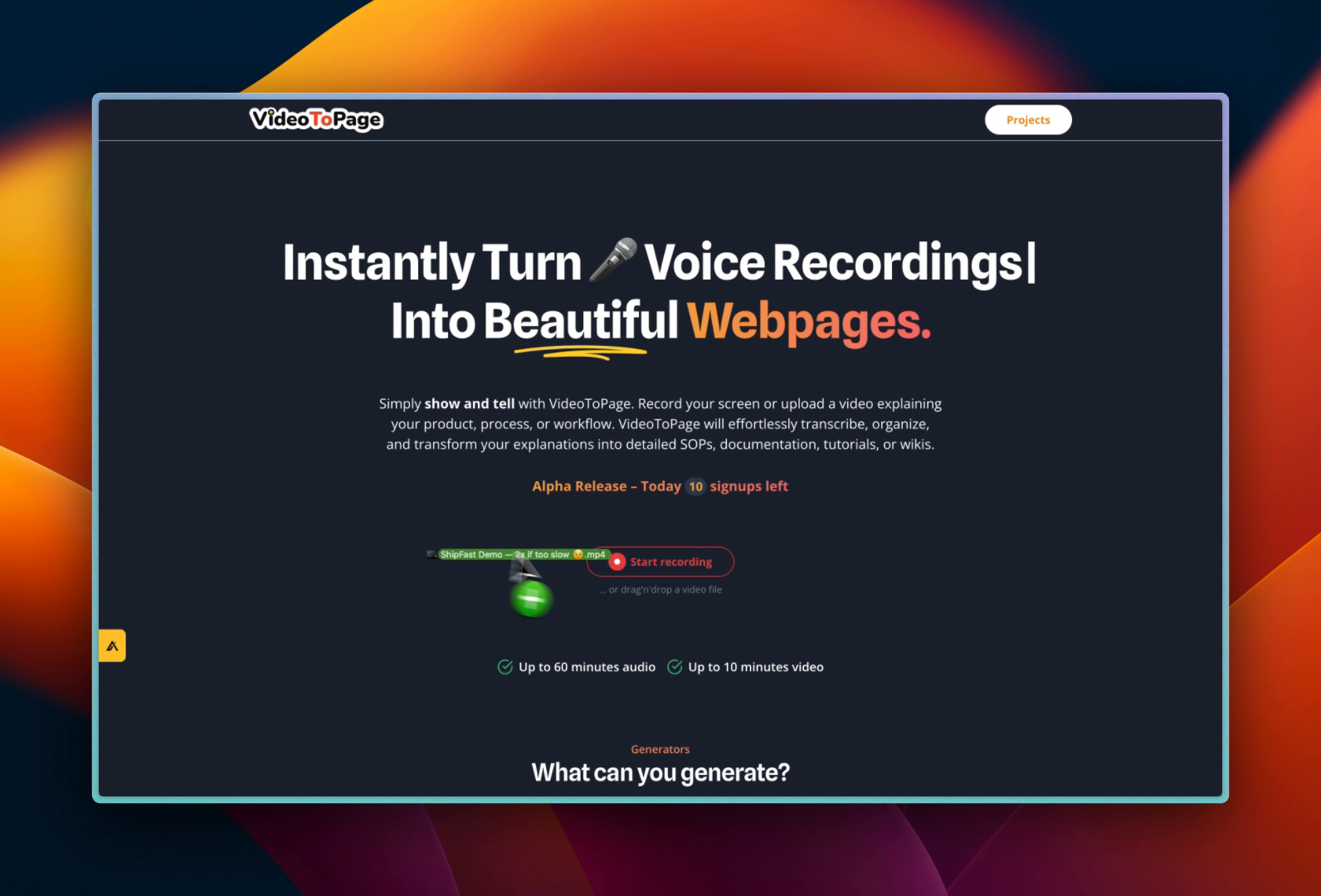Chronological Journal
Day 1: Conceptualization and Initial Setup

We began our journey with the core idea of transforming video content into structured documentation. The initial concept was simple: allow users to upload a video, process its content, and generate a comprehensive set of pages. The first step was to create an interface that could handle video uploads and display the progress of content processing.
Day 2: Upload and Processing

The next phase involved enabling users to select and upload their video files. We tested this functionality with a demo video titled 'ShipFast Demo — 2x if too slow .mp4'. The goal was to ensure that the system could handle various video formats and initiate the processing seamlessly.

As the video played, the system began transcribing the audio and capturing essential frames. This stage was crucial for extracting meaningful content that would later be transformed into documentation.
Day 3: Content Generation

With the video uploaded, the next step was to process the content. The progress window displayed real-time updates, showing the number of seconds transcribed, frames captured, and scenes recognized. Users could select options for content creation, ensuring a tailored documentation experience.
Day 4: Structuring the Project

We then moved on to structuring the project. Users could create and organize pages within their project. The interface allowed for seamless interaction, with a chat assistant available to provide guidance and suggestions.

The detailed project view displayed a list of pages such as 'Getting Started Guide' and 'Code Structure Overview'. This organization was designed to help users navigate through their documentation efficiently.
Day 5: Generating Pages

Once the structure was in place, the system began generating the pages. Each page's status changed to 'Generating', indicating active content creation. Users could monitor the progress and make adjustments as needed.

After a short while, several pages were marked as 'Generated'. This signaled the completion of the content generation process, allowing users to review and refine their documentation.
Day 6: Reviewing and Sharing

The generated documentation was now ready for review. The preview showcased a well-organized set of guides and tutorials for the ShipFast platform. An embedded video of the tutorial provided additional context.

To facilitate collaboration and sharing, we added a feature to generate a shareable link. Users could customize the link and select which pages to include, making it easy to distribute the documentation.
Day 7: Final Touches

The final stage involved adding the finishing touches to the documentation. The completed page for ShipFast included an introduction and various guides, ready to be shared or further edited. The project was now fully documented and available for use.
Additional Details

The documentation also covered detailed sections like 'Code Structure Overview', providing insights into the frontend, backend, database, authentication system, payment integration, email service, and SEO tools.

The 'Theme Customization Tutorial' guided users through choosing and applying themes, with visual aids like screenshots of the code editor and website previews.

The 'Payment Integration Guide' provided step-by-step instructions on setting up Stripe as a payment processor, covering account creation, API key retrieval, SDK installation, and configuration.

The 'Email Setup Instructions' included a guide on setting up Mailgun for email services, detailing domain verification and SMTP configuration.

The 'SEO Implementation Guide' discussed the importance of SEO tags and structured data for improving search engine visibility.

In summary, the documentation for ShipFast was comprehensive and well-organized, covering all essential aspects of development and customization. The interface allowed for easy navigation and sharing, making it a valuable resource for developers.